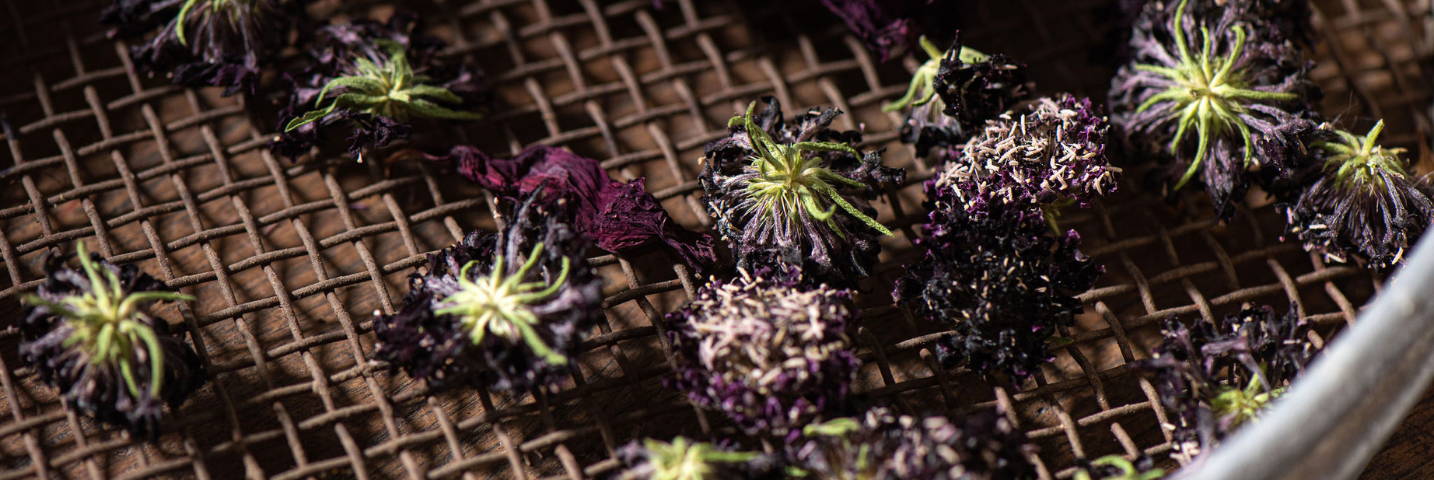
Natural Dye + Natural Dye Khadi Kit Instructions Guide
Nature is truly extraordinary, it's time to reconnect with it's wisdom and the traditional of natural dyes.
Like all journeys, your natural dye journey will be a personal one. We encourage you to dive deep into nature, to connect with the seasons experiencing all they have to offer and to learn from your journey, always respecting nature as the ultimate teacher.
Some benefits from dyeing with our kits :
Creativity
Joy
Connecting to nature
Respect for the earth
A sustainable point of view
Supporting traditional wisdom & livelihoods
Time with family or friends
Sharing of wisdom through trial & error
Connecting to community
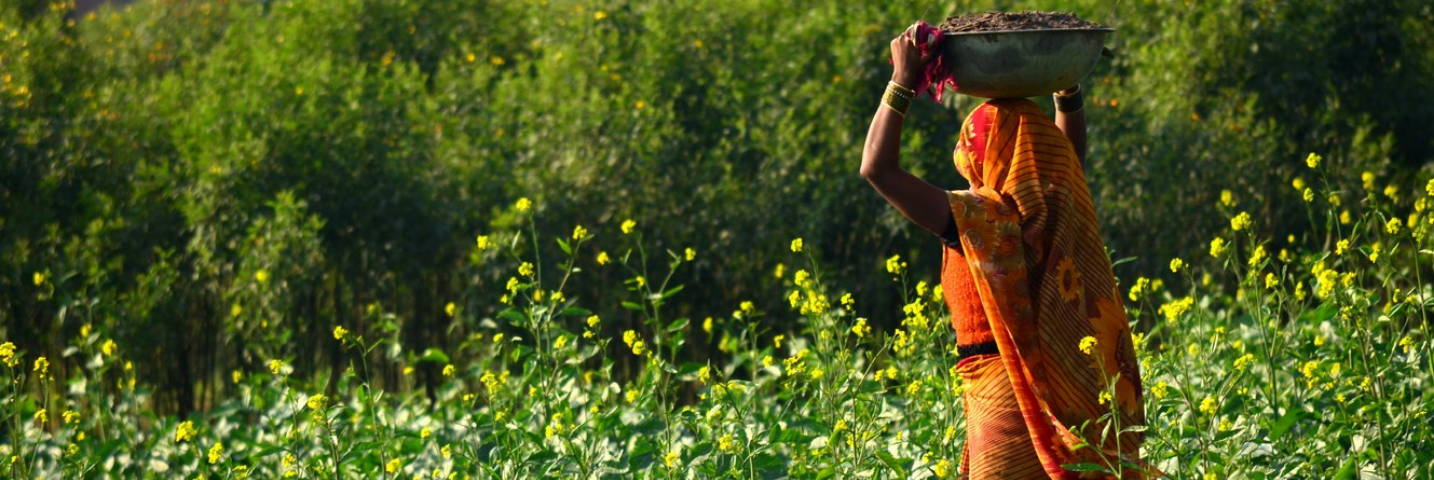
Low Impact to the Environment
Heating of vats - gas/electricity/fire. Water consumption for vats but that can be recycled onto gardens or water consumption for garden maintenance - rain water collection can support this as well as vat water. Vats can be reused many times over either by exhausting the dye pigment or even topping up the dye pigment content. To be realistic all these uses create very limited impact and can be reduced to zero with focus and effort.
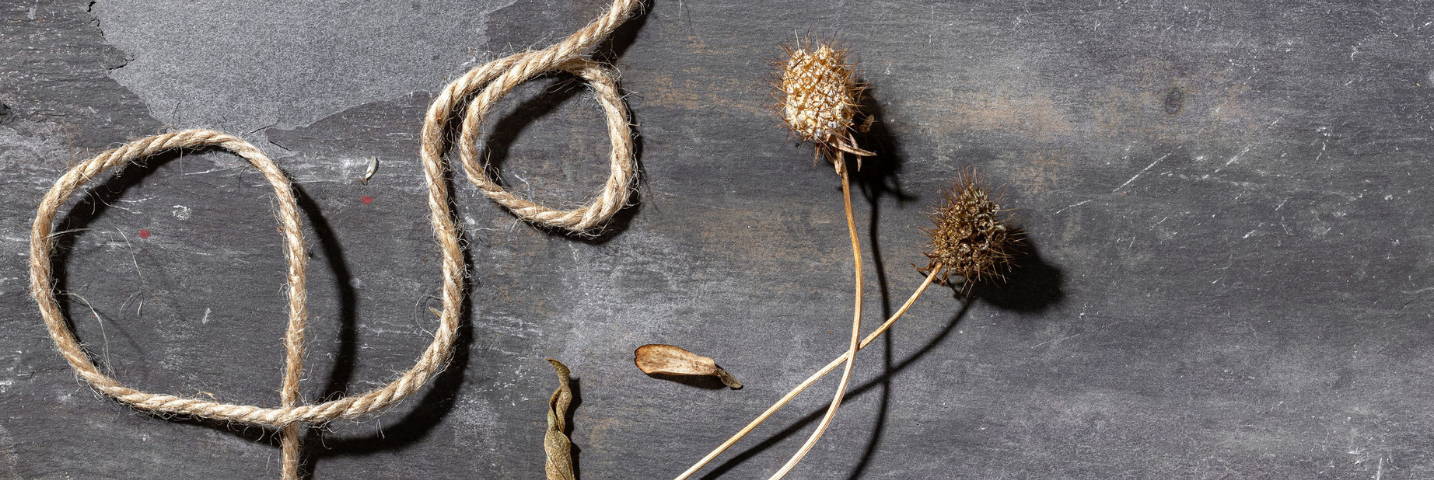
You will need :
An old stainless steel or non reactive pot with lid
Remember to keep your cooking pots & dyeing pots & utensils separate, don't mix them.
Thermometer
Access to heat source - gas/electricity
Rubber Gloves
Buckets
Wooden spoon or length of dowel to stir
Old cloths
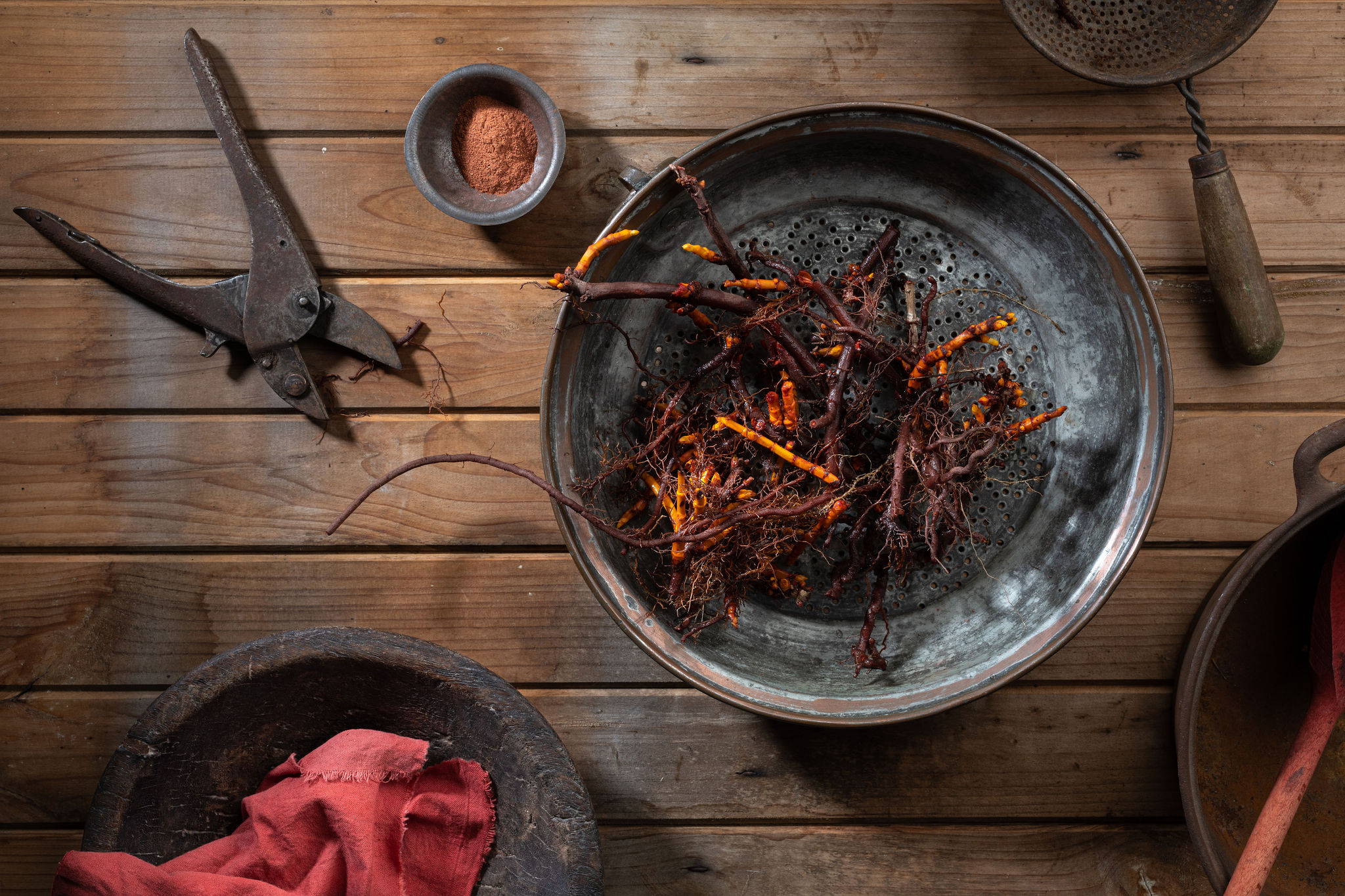
Let's get started
Khadi
Khadi is cloth made from natural fibres, be it cotton, silk, wool, linen, hemp or nettle. It is a hand spun yarn and a hand loomed cloth. Not to be confused with handloom which is machine spun yarn and a hand loomed cloth.
Natural fibres and their classification
Cellulose fibre is any fibre derived from a plant - cotton, hemp, linen, ramie, jute, nettle. Require scouring, tannining & mordanting before dyeing.
Protein fibre is any fibre derived from an animal - silk, wool, angora, alpaca, yak, cashmere, mohair, camel. Take easily to natural dye and do not require tannining, but will require scouring, mordanting before dyeing.
Step 1 - Scouring
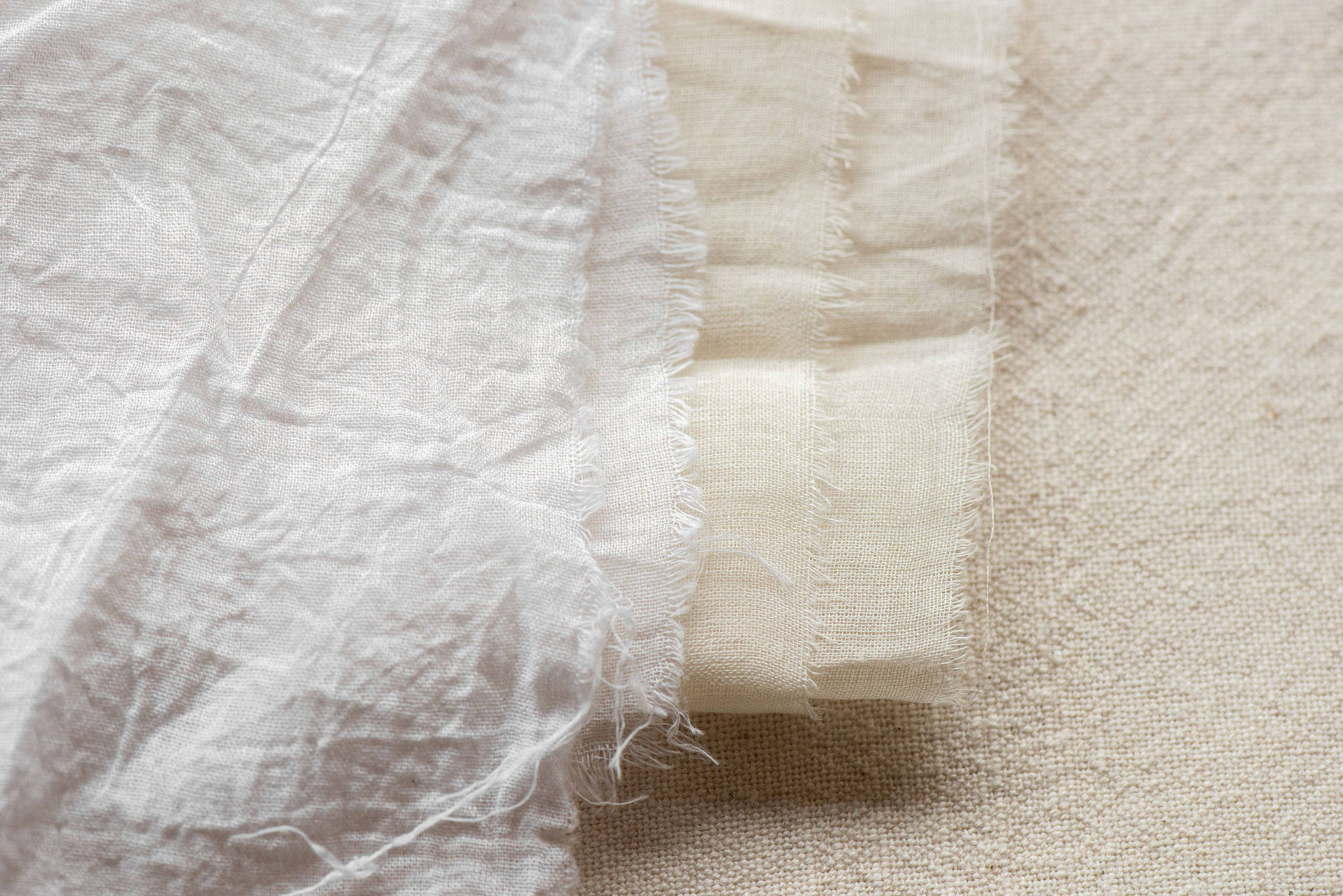
We have scoured your cloth in your kits for you!
However, if you would like to learn how for future knowledge, please visit here for our instructions.
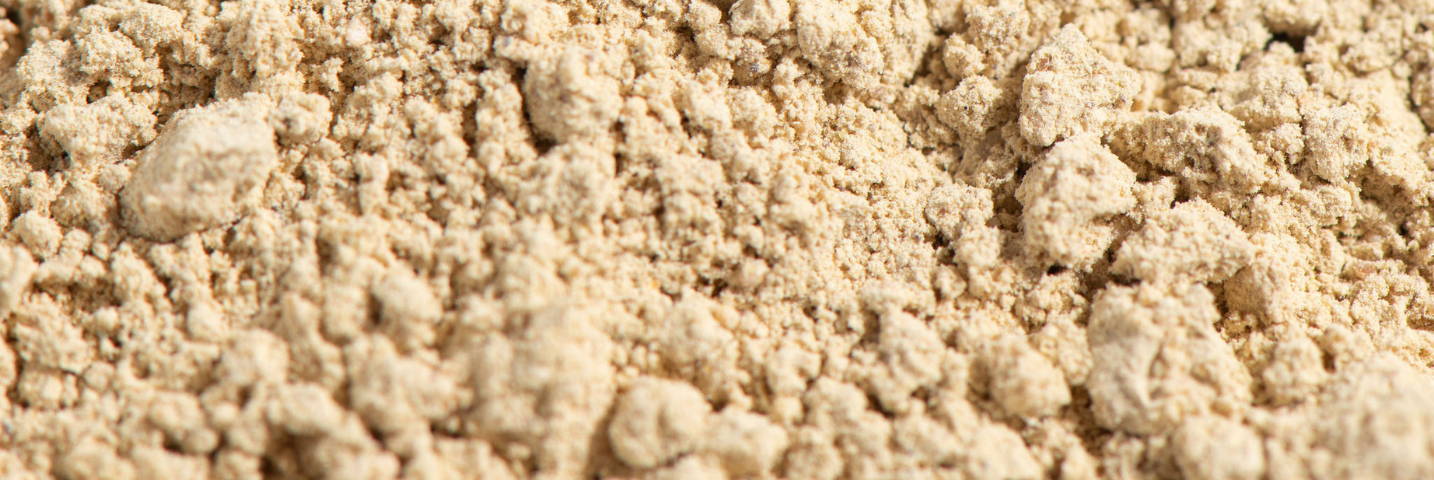
Step 2 - Tannins for Cellulose fibres
Tannins are needed on cellulose fibres only in preparation for absorption in the mordanting process (step 3).
For lighter shades we recommend preparing your fibre with the either Myrobalan or Gallnut as a tannin and you can use either Powder or Extract versions. For darker shades we recommend using either Cutch or Walnut and again, powder or extracts work.
Recommended is usually 8 - 15% WOF so we go with 10%. Remember that tannins are also dyes so the tannin you select will affect your dye result.
In our kit we have provided Myrobalan as the tannin, a very reliable traditional tannin with a slightly warm tone.
You will need :
Large stainless steel or enamel pot/vat
Tannin 10% WOF
Small mixing spoon
Large wooden spoon
Instructions :
Weigh your fibre to calculate tannin. Then wet your fibre.
Dissolve tannin with hot water in small vessel with spoon.
Fill large pot (enough water to cover your fibre) and bring water to 60-65 degrees.
When hot add tannin to mix and stir with large wooden spoon.
Add fibre constantly submerging it below the water and removing air bubbles.
Leave fibre submerged and continue to rotate below water line for 60mins.
Allow to cool before removing fibre and rinse in clean water.
Proceed to mordanting today or leave to dry.
Note : Tannin bath can be re-used so if you have the pots and the space label this and set aside for next time.
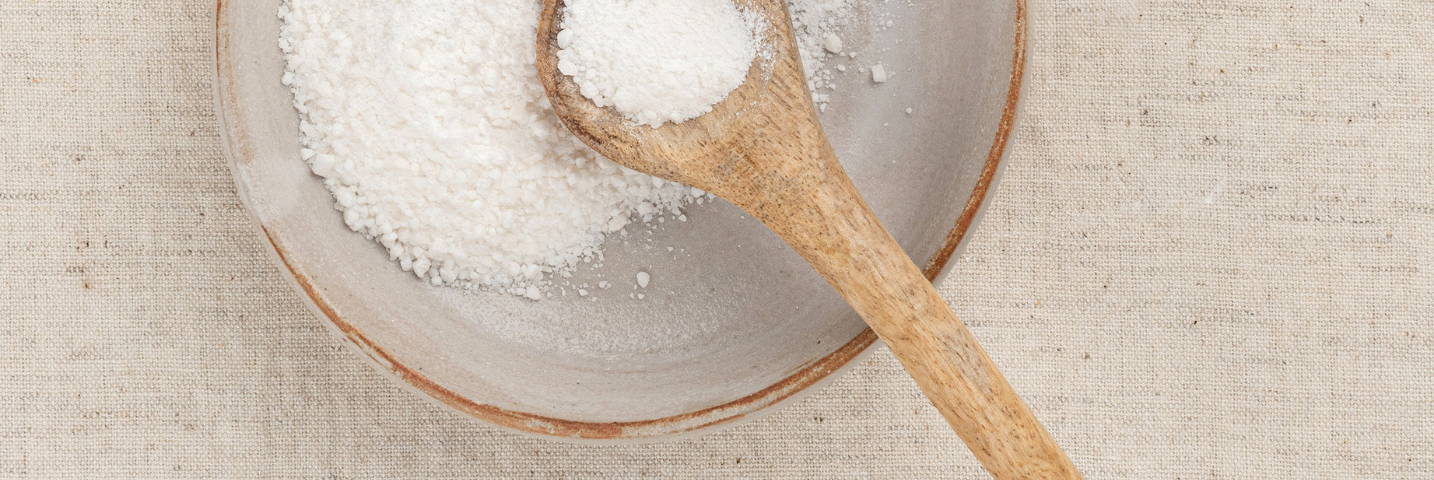
Step 3 - Mordants (Alum and Alum Acetate)
Mordanting coats the fibre to allow your dye to stick for a longer, gives a richer outcome and improves the longevity & light fast qualities of your dye over it's life.
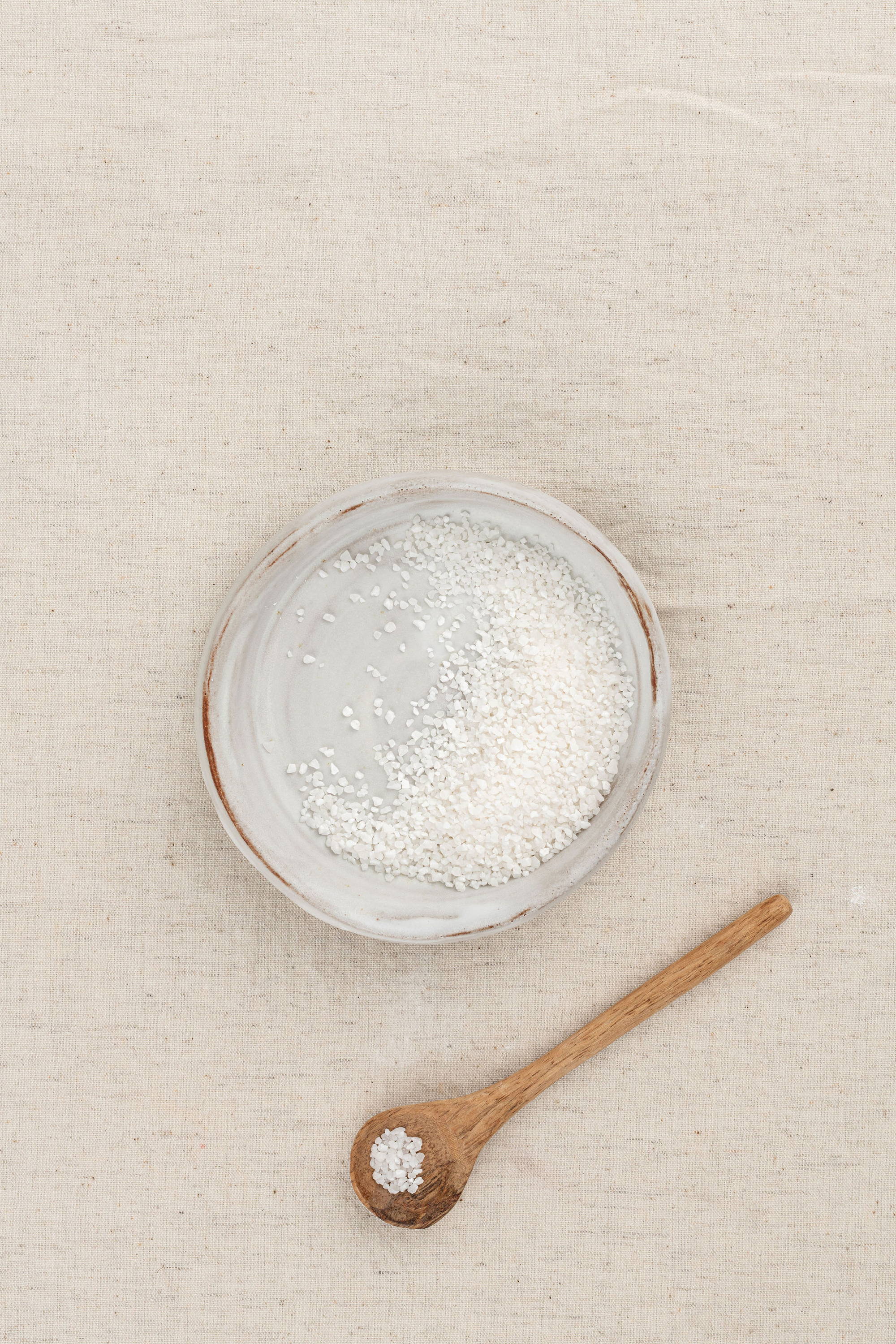
MORDANTING CELLULOSE
In our Khadi Kit we have supplied you 100% natural cotton hand loom & khadi textiles and both alum & alum acetate enough to cover fabric in kit. In our Natural Dye Kit we have just supplied alum.
You can use aluminium (alum) or aluminium acetate to mordant. Like tannins this is a personal choice based on your desired colour or simply availability at the time.
Choose from either :
Alum 12% WOF or
Alum acetate 8% WOF
You will need :
Bucket or vessel
Mordant - either Alum 12% WOF (weight of fabric) or Alum acetate 8%
Small mixing spoon
Large wooden spoon
Rubber gloves & mask
Instructions :
Fill large pot (enough water to cover your fibre) with warm water from tap 40-50degrees.
Weigh your fibre to calculate tannin. Then wet your fibre.
Put on mask & gloves. Dissolve alum or alum acetate with hot water in small vessel with spoon. Remove mask.
Add to pot and stir with large wooden spoon.
Add your wet tannined fibre to vessel giving it a stir and leave it submerged below the water removing air bubbles.
Leave sit for 2 hours or as much as overnight, giving it a stir a couple of times during this time.
Remove fibre, squeeze off excess water and hang to dry to leave wet and proceed to dyeing.
Note : Mordant bath can be re-used so if you have the pots and the space label this and set aside for next time.
MORDANTING PROTEIN - in case you want to use your own Protein fibres
Wool
You will need :
Alum 15% WOF or
Cream of Tartar 5% WOF - optional
Large stainless steel or enamel pot/vat
Small vessel to mix solution
Small mixing spoon
Large wooden spoon
Instructions :
Dissolve alum & cream of tartar (optional extra) in very hot water in small vessel.
Fill large vessel with hot water from tap with enough water to cover your fibre.
Mix dissolved alum/cream of tartar solution to large vessel.
Add wet fibre into pot and stir well. Heat gradually over 35-40mins to 80-90degrees and hold for 1 hour ensuring you gently turn the fibre.
Leave to cool in bath for 20mins.
Rinse in clean water and proceed to dyeing or store for another day.
Silk
You will need :
Alum 15% WOF
As per Cellulose except Silk does not require heating. Simply leave in hot water from tap for 1 hour.

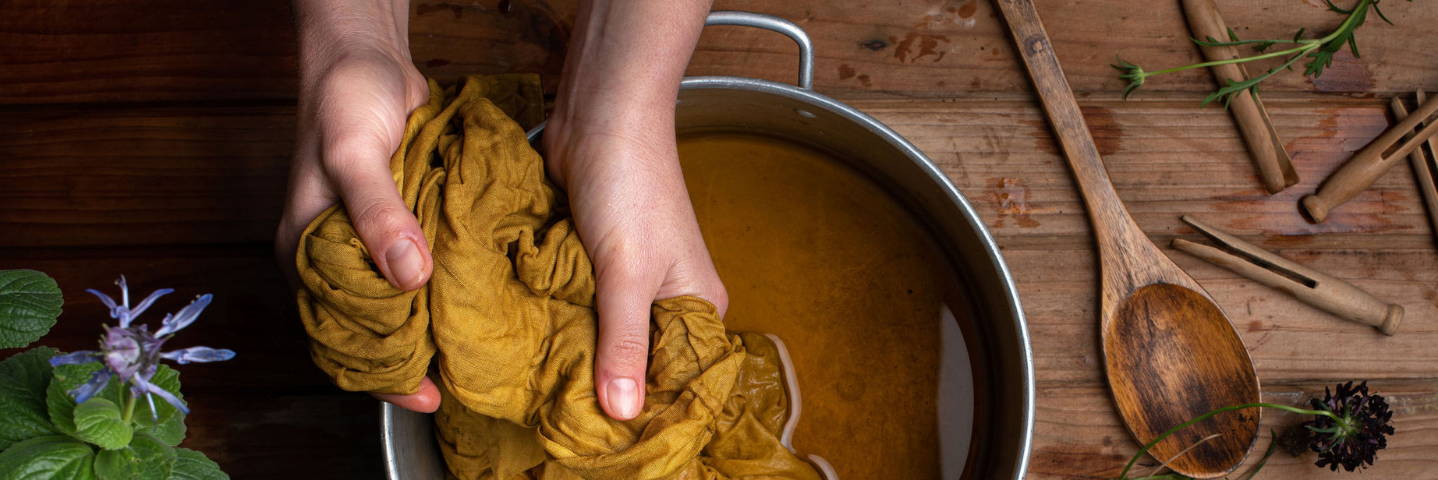
Step 4 - DYEING
Now your fibre is ready to dye!
You will need :
Large stainless steel or enamel pot/vat
Dye extract or powder % WOF - visit our Natural Dye Glossary to confirm recommended % for your use
Large wooden spoon
Instructions :
Fill large pot with warm water from tap with enough water to cover your fibre.
Add dye to water to dilute stirring well.
Add wet fibre into pot and stir well. Heat gradually over 1 hour to 90degrees and hold for 1 hour ensuring you gently turn the fibre.
Rinse in clean water and dry.
Exceptions :
Madder must be heated slowly over 1 hour to just 40-50degrees and held for 1 hour.
Madder extract should be bagged in cheesecloth or textile and dunked into vessel, heated to 40-50degrees then squeezed out. The remaining dye is your dye bath. Add wetted fibre and heat to 60degrees and hold for 1 hour.
Iron - After dyeing is a final optional step to dramatically alter the colour of your dyed fibre giving you a whole range of colours to explore from one dye.
You will need :
Iron 2% WOF
Small vessel to mix solution
Small mixing spoon
Large wooden spoon
Instructions :
Dissolve iron in very hot water in small vessel.
Fill large vessel with hot water from tap with enough water to cover your fibre.
Mix dissolved iron solution to large vessel.
Add wet fibre into vessel and stir well. Heat to 70-75degrees and hold for 30mins ensuring you gently turn the fibre.
Rinse in clean water well.
Rinse vessel with clean water to ensure no contamination from the iron to future vats.
Note : Once fibres have been mordanted they do not need to be re mordanted between dyes.
Visit our Natural Dye Glossary for additional information on each dye.
Step 5 - CARE following Dye Process
Rinse your dyed fibre and leave to hang dry.
Please visit our Care guide for advice on ongoing care of your natural dye cloth.
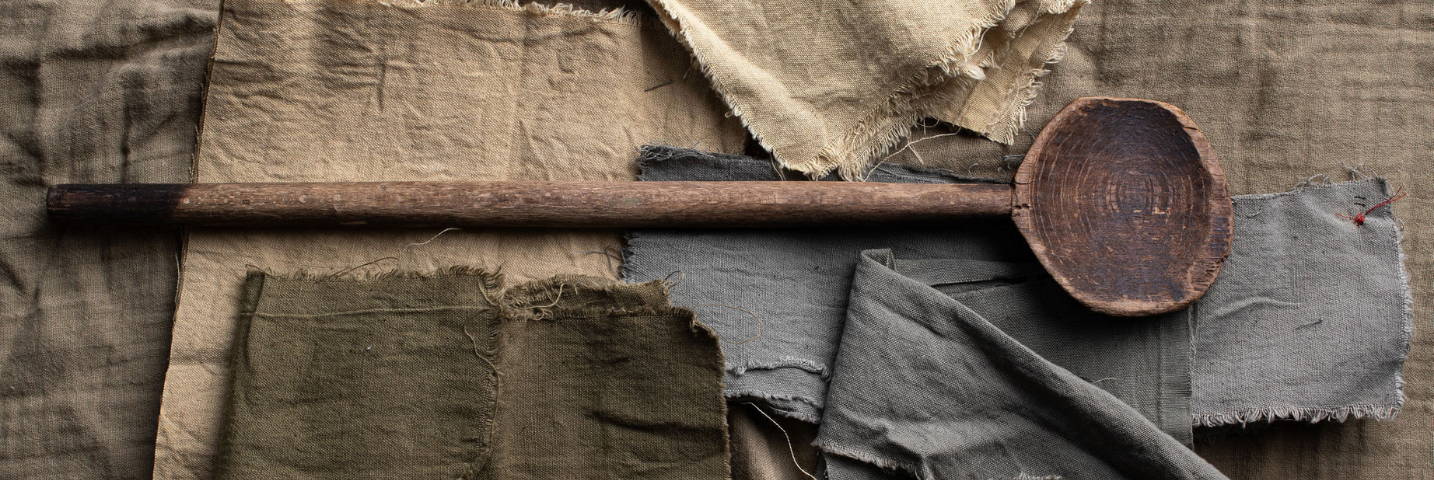
Health and Safety
It is advised to wear a mask when weighing out and mixing dyes, fine to remove once dye is in liquid form.
Rubber gloves are recommended when hands go into water with minerals such as Alum, Alum acetate, Iron, Calcium carbonate, Soda Ash.
In regard to the disposal of what you will be using it will be safe to empty onto your garden as there will be an exhausted quantity of alum left in the water. All mordant and tannin baths can be reused with a minimal top up so no need to dispose of after each use, exhaust your baths as much as possible. If uncertain when disposing test the PH level, you are aiming for the neutral zone close to 7.
